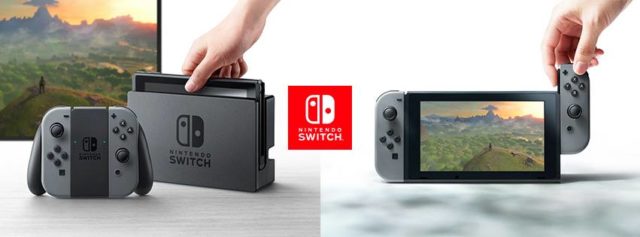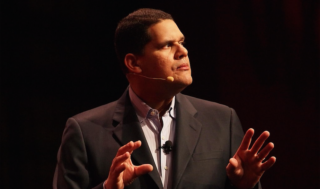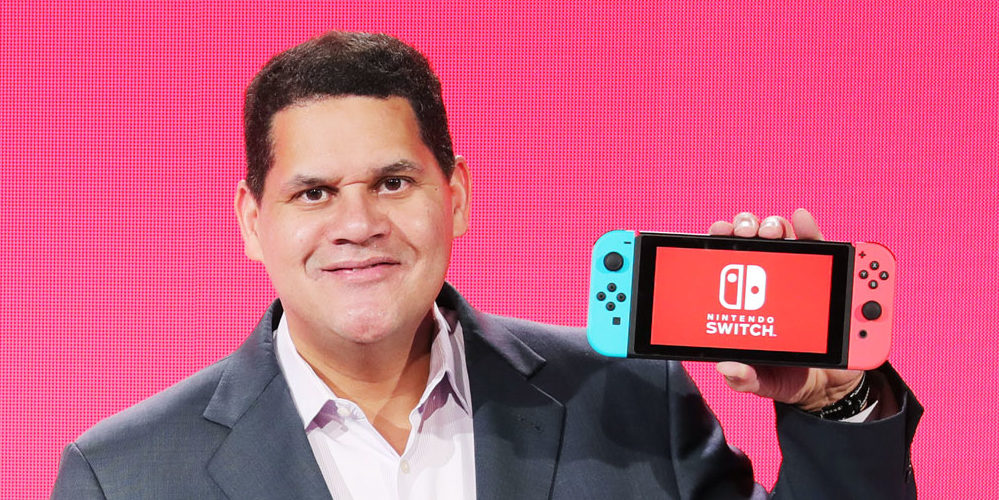Nintendo launches its $300 Switch hybrid console/tablet on March 3 and gamers around the globe are excited about at least one launch title, The Legend of Zelda: Breath of the Wild. Nintendo finds itself in the challenging position of trying to stay relevant in the console wars at a time when PC and mobile gaming (including Nintendo games co-published by DeNA) dominate the landscape, while Sony holds an insurmountable lead with PlayStation 4.
Nintendo’s strategy of diversifying with its Nintendo 2DS/3DS business and entry into the mobile games business with titles like Pokémon GO, Super Mario Run and Fire Emblem Heroes means that the company doesn’t need to replicate the Wii’s mainstream success to continue developing hardware and publishing games.
Reggie Fils-Aimé, president and CEO of Nintendo of America, joined [a]listdaily to talk about the Nintendo Switch and the evolution of the company that introduced Mario to the world in this exclusive interview.

What were some of the lessons learned from Wii U and Nintendo 2DS/3DS that have been applied to Nintendo Switch?
Our goal with any console launch is to deliver an entirely new game experience for players. With a platform like Wii, the appeal was obvious. You move the controller like you would a tennis racquet, or a sword, and the payoff is instant. With Wii U, the value of a second screen in gameplay was not instantly recognized, and often problematic for developers to fully take advantage of in terms of what the system could do. However, with Nintendo Switch, the unique appeal of our ‘anywhere, anytime, anyway’ approach is readily apparent. So we think consumers will get the appeal right away, and developers will embrace how it can bring their ideas to life. The concept of ‘constant engagement’ was also built into our Nintendo Switch planning. You’ll be seeing this in a number of ways, but most importantly to gamers, it means a steady flow of big first-and-third-party franchises becoming available to play on the system in 2017. These games will launch starting on March 3 alongside the Nintendo Switch hardware and will continue through the holiday.
Many gamers are familiar with the Nintendo Wii, which crossed many generations of gamers and introduced many new and older audiences to gaming. How do you see Switch connecting with this broad audience?
The clearest early example of this at launch is the game 1-2 Switch. It contains more than two dozen activities like quick draw, sword fighting, copy dance and one called ‘Ball Count,’ which takes real advantage of the advanced HD Rumble feature of the Joy Con controller. This game is going to resonate with anyone who played Wii Sports—or for that matter, even if you didn’t. The difference, of course, is this. With Wii, you could invite your aunts and uncles and grandparents to join in the fun when they were over to your house. But with Nintendo Switch, you can take that multiplayer fun to them, wherever they are, due to the portability of the system. So the opportunities to experience a new kind of gaming fun are dramatically increased.
Nintendo is also now reaching a broader mobile audience through mobile games like Super Mario Run and Fire Emblem Heroes (and the upcoming Animal Crossing). How do you see those games introducing new consumers to these characters and potentially driving them to Switch without cannibalizing the console audience?

Well, I don’t have to answer this hypothetically—I can simply point to what’s already happening. Last summer, something called Pokémon GO exploded into pop culture. Of course, veteran Pokémon fans were quick to begin playing. But with over a half billion downloads globally in just the first couple of months, it’s obvious that a lot of those new players didn’t know a Pikachu from a Charmander. For them, everything about Pokémon was new. We suddenly started seeing sales for legacy Pokémon titles begin to spike. And then, when Pokémon Sun and Pokémon Moon launched, they became the fastest-selling Pokémon titles ever, and the fastest-selling games of any kind in the history of Nintendo 3DS. In the last quarter of 2016, here in America, we sold more games for Nintendo 3DS than any other quarter in its five years on the market. And the impact carried over to Nintendo 3DS hardware, too. Six million more systems sold at the end of 2016 than during the same period a year before. In the US, year-on-year sales of Nintendo 3DS hardware increased for seven consecutive months. So to us, it’s clear that our strategy of using mobile titles to build interest in our dedicated platforms certainly can work. In fact, it is working.
Creatively, what has the new gaming audience on smartphones and tablets opened up for Nintendo developers as they work on Switch titles?
A typical Mario or Zelda game can literally eat up hours of your attention during a sitting. But sometimes everyday life gets in the way, and you can’t always play the games you want to play in long uninterrupted stretches. What the mobile space has proved is that there’s a huge audience for ‘bite-sized’ games that fit into a busy schedule. So in a sense, this is a liberating experience for developers, including those working on an advanced platform like Nintendo Switch. And you can see evidence of that with 1-2 Switch. It applies a bite-sized approach to local multiplayer entertainment. You can play for a very short amount of time . . . and either demand a rematch, or turn the Joy Con controllers over to someone else to take a turn.
Can you explain how Shigeru Miyamoto was involved in the development of this console and its games, and what he brings to the table?
At our global simulcast unveiling of Nintendo Switch last month, you saw many new developers introduced. They have been with Nintendo for many years, but maybe they weren’t as well known to the public as Mr. Miyamoto. They included the overall producer and director for the platform and the lead directors for individual games. So they were the key developers that Nintendo put center stage to explain the Nintendo Switch, and to showcase their game creations that bring it to life. Mr. Miyamoto holds the title of Creative Fellow for all of Nintendo. He is central to Nintendo Switch in terms of advising the developers that were featured in the global simulcast, and his decades of gaming experience is shared with all of those carrying the torch forward for Nintendo when it comes to the Nintendo Switch launch.
Some mini-games within 1-2 Switch don’t even use the screen to play. Can you explain what Switch has opened up in terms of new ways to interact, especially with family friendly multiplayer?
Our first home system ever, the Nintendo Entertainment System, came packaged with two controllers. That’s the same thing with Nintendo Switch. People having fun together is part of our DNA. But that group fun always occurred the same way—with multiple players looking at a common screen.
NES Classic Edition remains very hard to find at retail today. How challenging will it be for gamers to actually find a Switch at retail this year?
Well, the market will decide that answer in the short term. We hope it’s very popular. But the fact that Nintendo Switch arrives in March . . . rather than a typical Thanksgiving launch window . . . means that many of the first-year purchases will occur over the course of many months, rather than just several weeks. So we’re optimistic we’ll meet demand.

